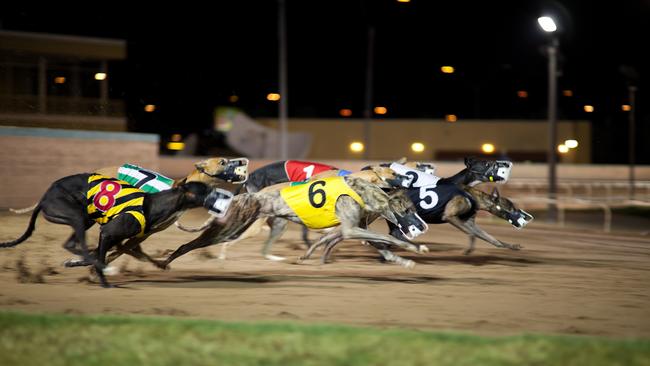Safety concerns over ‘deadly’ greyhound industry
The greyhound racing say been described as “barbaric”, as advocates call for action following a horror year on the track.
Victoria
Don't miss out on the headlines from Victoria. Followed categories will be added to My News.
Animal advocates are demanding an urgent review into “government funded greyhound carnage” after nearly 50 dogs were killed on the track in Victoria last year.
New Animal Justice Party MP Georgie Purcell will also call on the Andrews government to establish an Inquiry into the “deadly” greyhound industry when state parliament returns next month.
Activists said the deaths of two young dogs at The Meadows racetrack in the last week of the year had exposed critical safety concerns.
It brings the 2022 death toll to 48 - four more than in 2021. Australia wide, 167 dogs died last year – including 18 in December alone.
Data compiled by the Coalition for the Protection of Greyhounds from Stewards’ reports have revealed that almost 3300 greyhounds were hurt while racing in the past 12 months.
The reports revealed that on New Year’s Eve, two-year old dog, Town Rocker, fell at the home turn and suffered a fractured foreleg before being put down.

On December 28, two-year-old Tower Bell also fell at The Meadows’ home turn, suffering a fractured skull which resulted in him being euthanised. According to the data, Tower Bell was the seventh Victorian dog to die from a broken neck or skull last year.
Coalition for the Protection of Greyhounds spokeswoman Joanne Lee said the deaths highlighted that even modernised tracks still kill and injure dogs.
“All forms of greyhound racing are dangerous, no matter what the greyhound racing PR machine says,” she said.
Ms Lee said dogs were often killed due to treatable broken legs, but she claimed the “barbaric” industry wouldn’t spend money because “there’s no guarantee the dog could compete again”.
“These dogs are nothing more than a commodity to the industry,” she said.
“The greyhound racing industry is plagued with issues. The number of greyhounds dying and being injured clearly demonstrates the callous disregard that both the industry and government have for these innocent dogs.”
Ms Purcell said as other countries look to ban the sport, the Andrews government propped it up with taxpayer money.
“The dogs who make it out of the industry alive end up broken and traumatised, with mostly volunteer-run rescue groups left to raise funds to care for and rehome these dogs,” she said.
“I firmly believe that the industry has no place in Victoria, and am determined to make that case to the government.”
A Victorian government spokesman said significant improvements to animal welfare had been made in recent years.
“We take animal welfare extremely seriously, and the loss of any greyhound is distressing,” he said.
A Greyhound Racing Victoria spokesman said there has been a 50 per cent reduction in racetrack deaths over the past three years.
“Rigorous processes, systems and rules are in place to prevent unnecessary euthanasia, with euthanasia of a racing greyhound only permitted for severe health or behavioural issues,” he said.
Nearly 3000 ex-racing greyhounds were rehomed in 2021/22.



